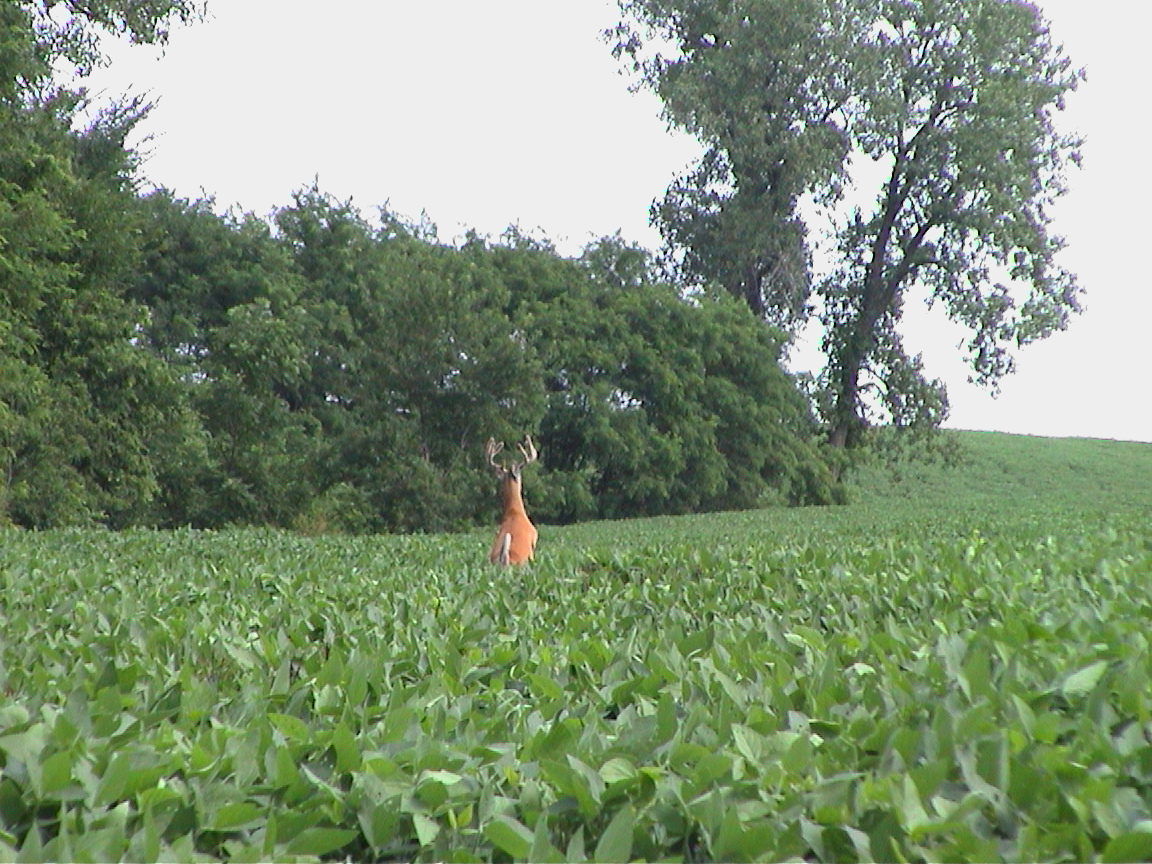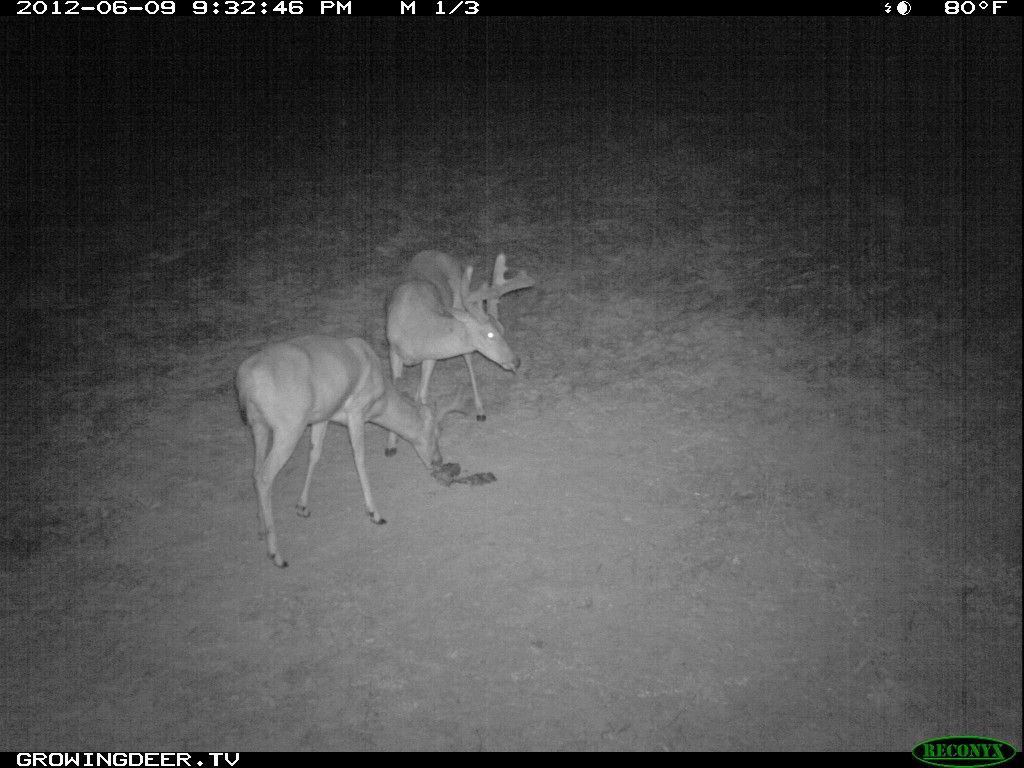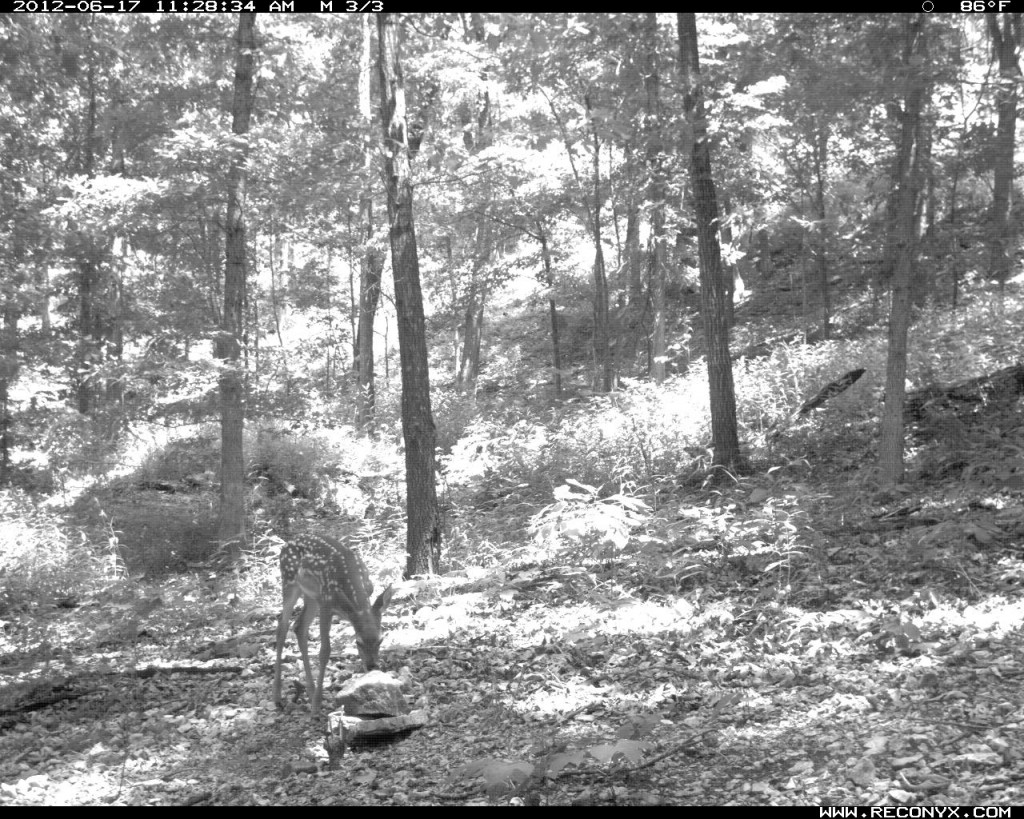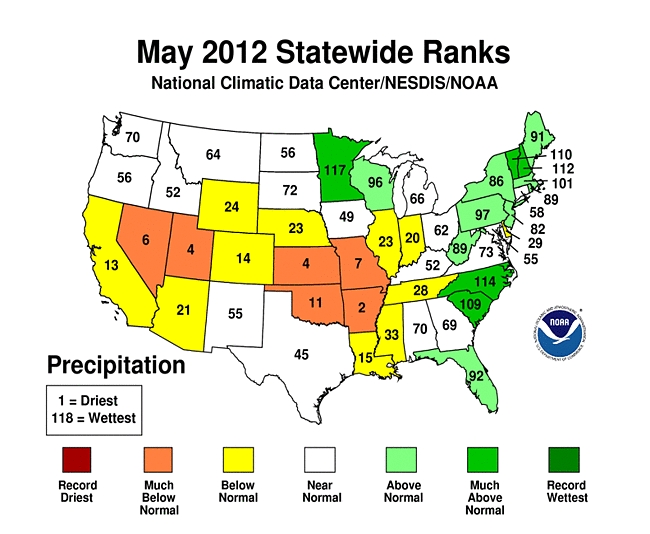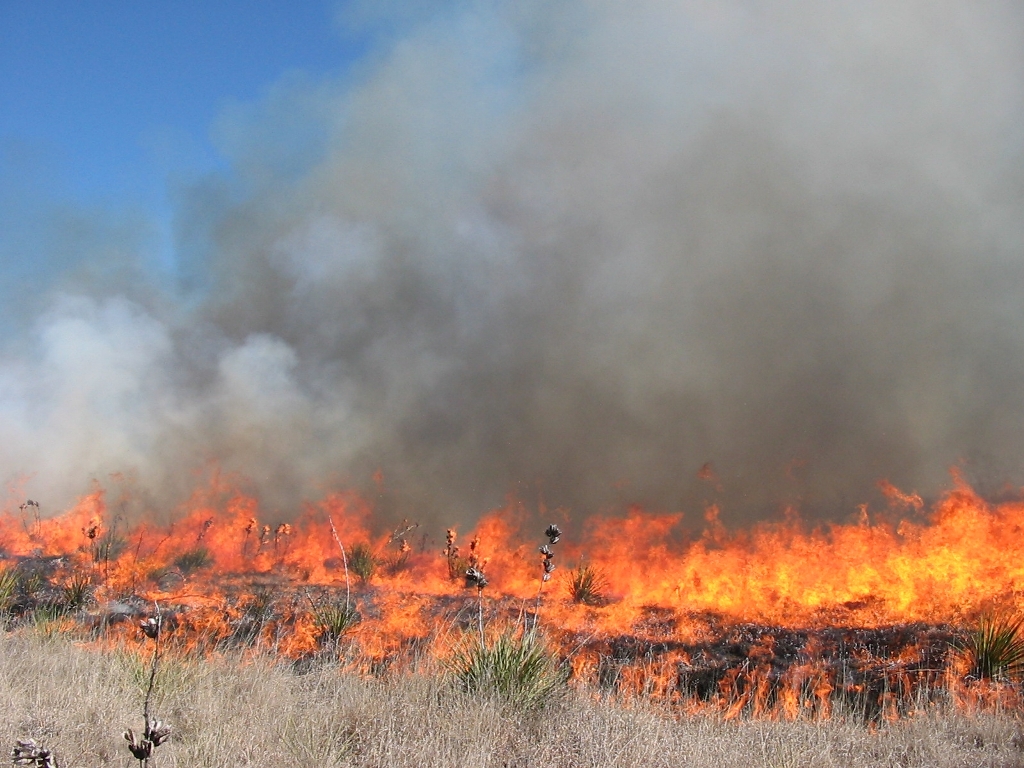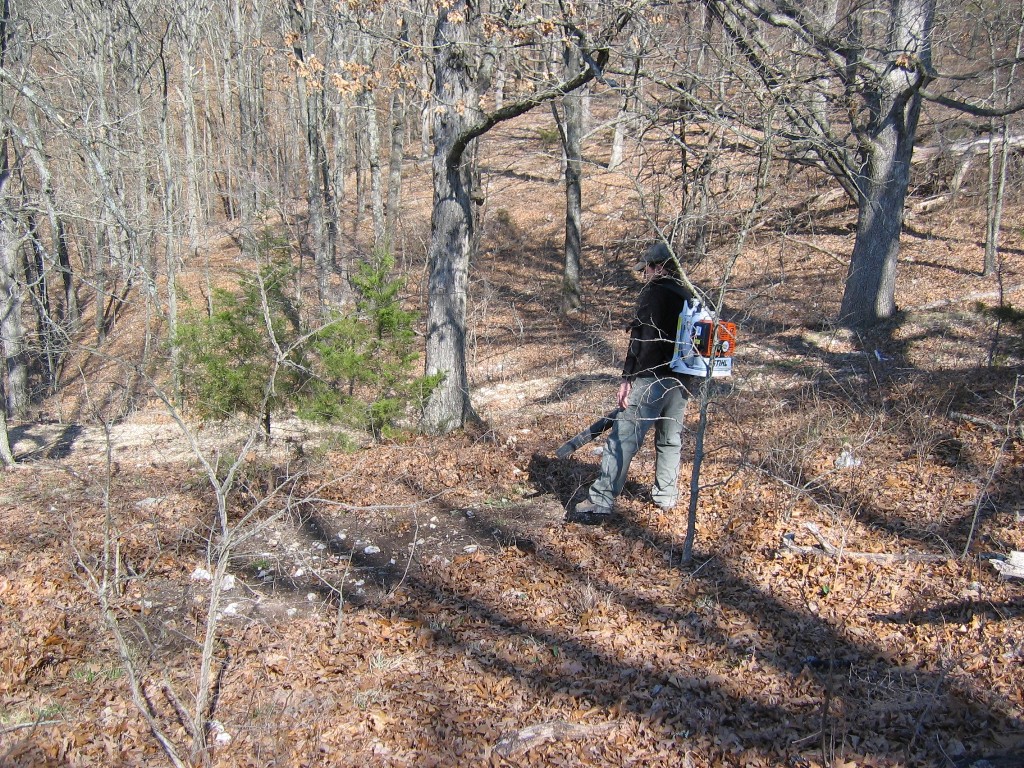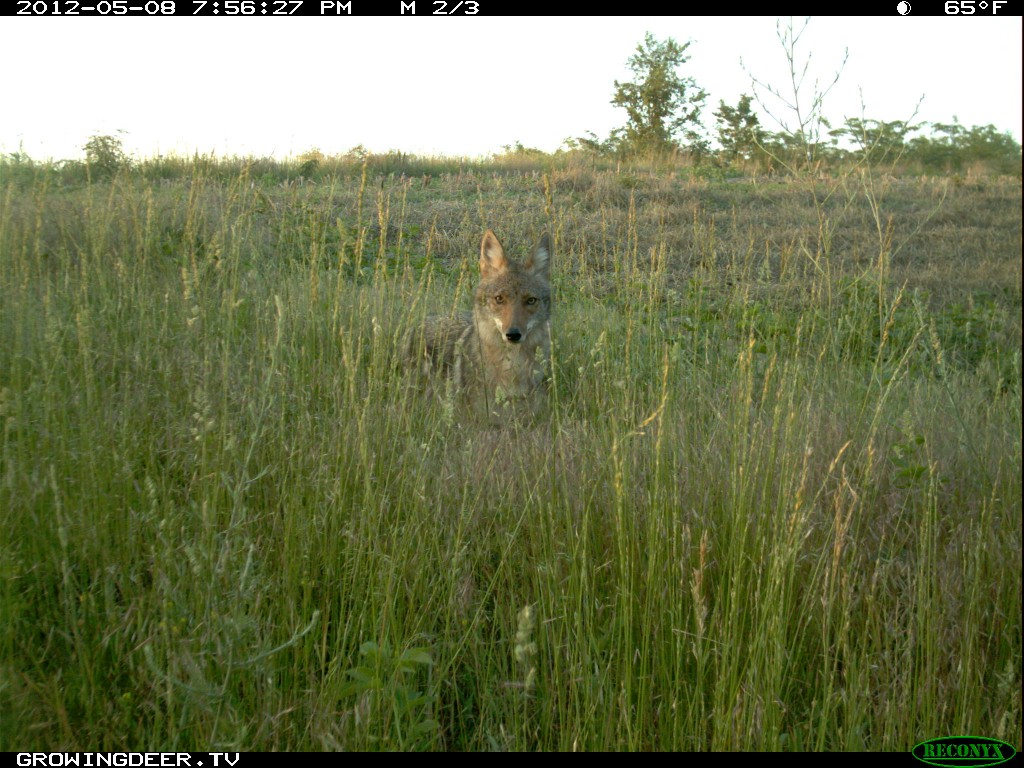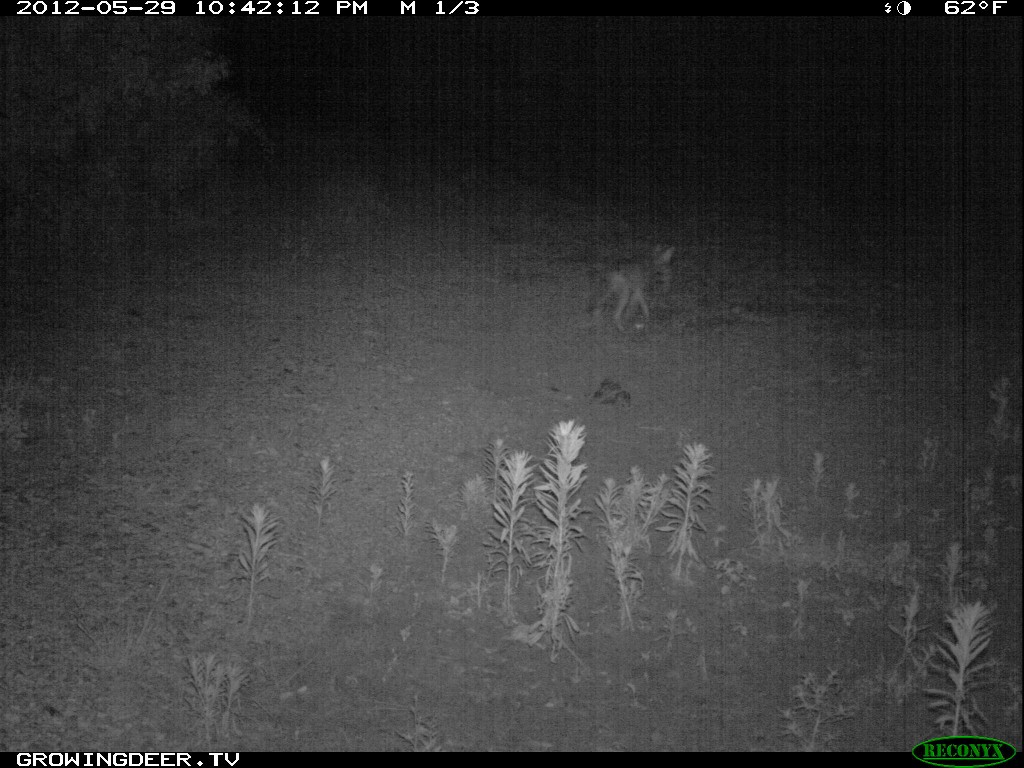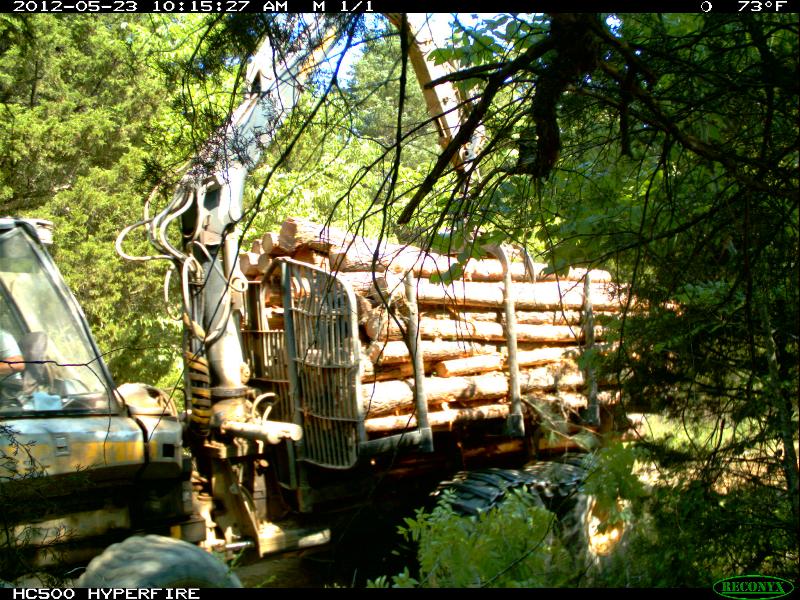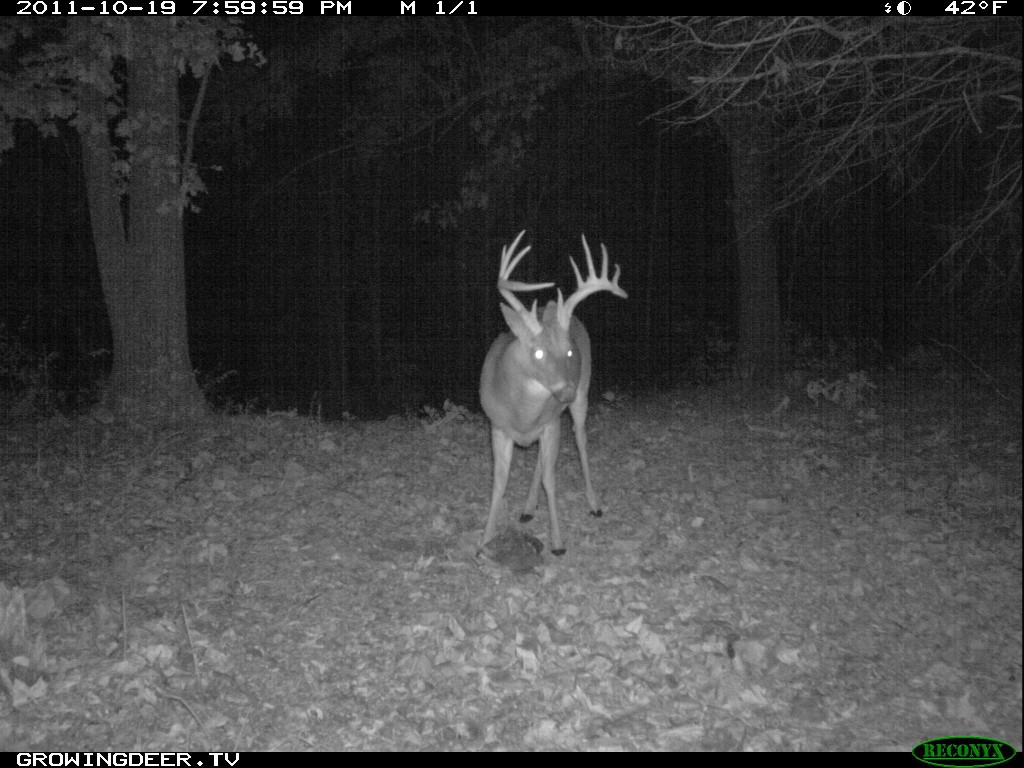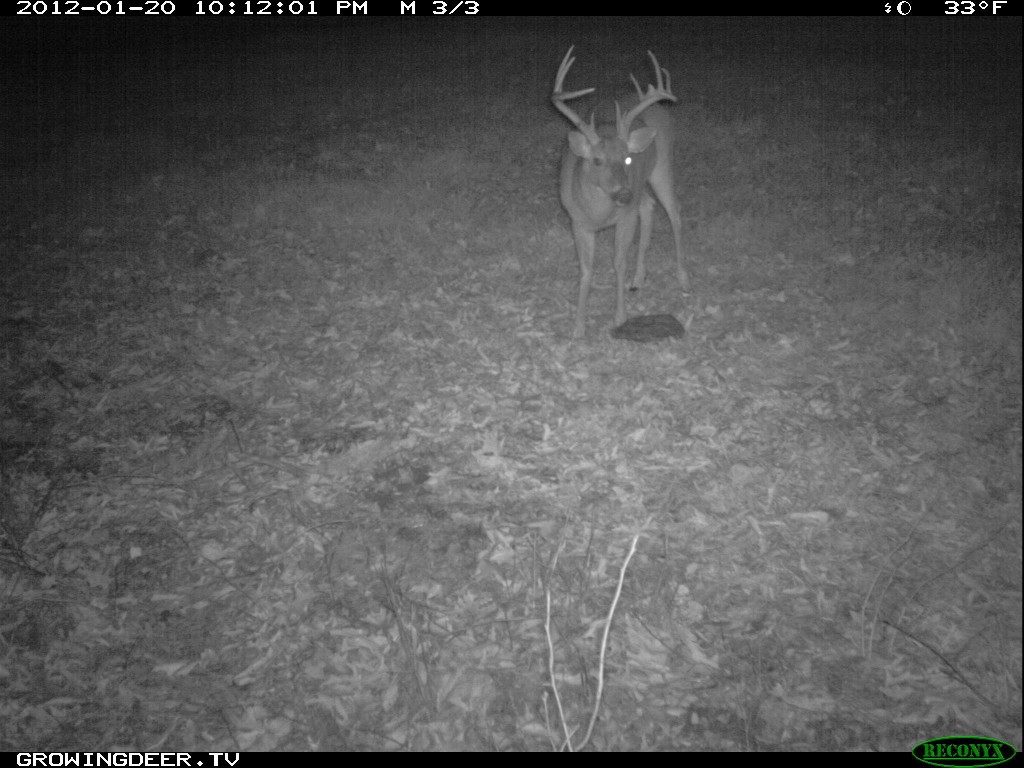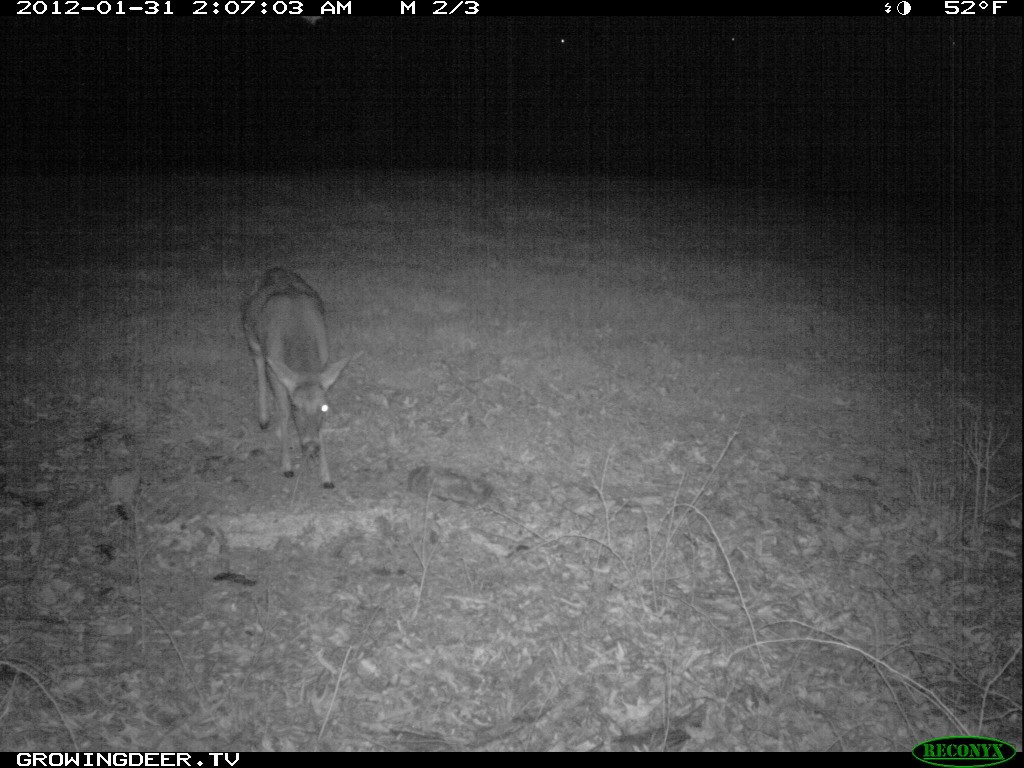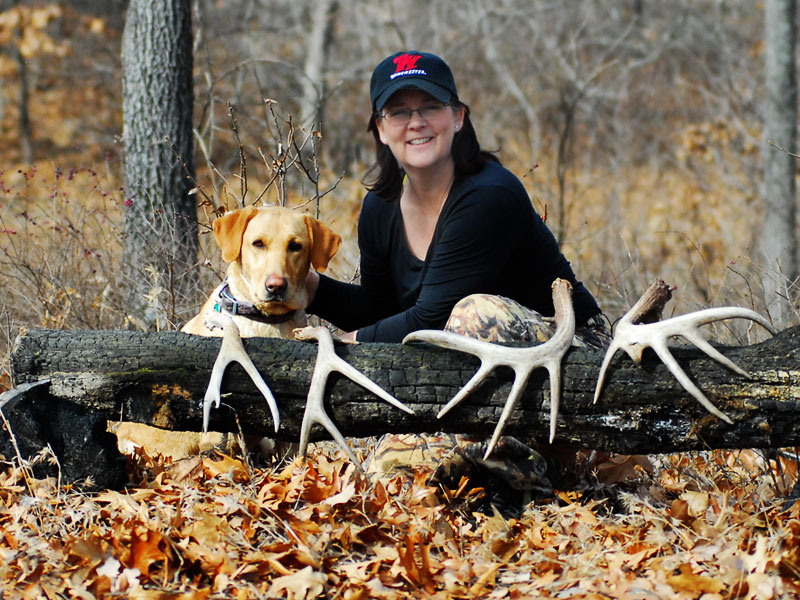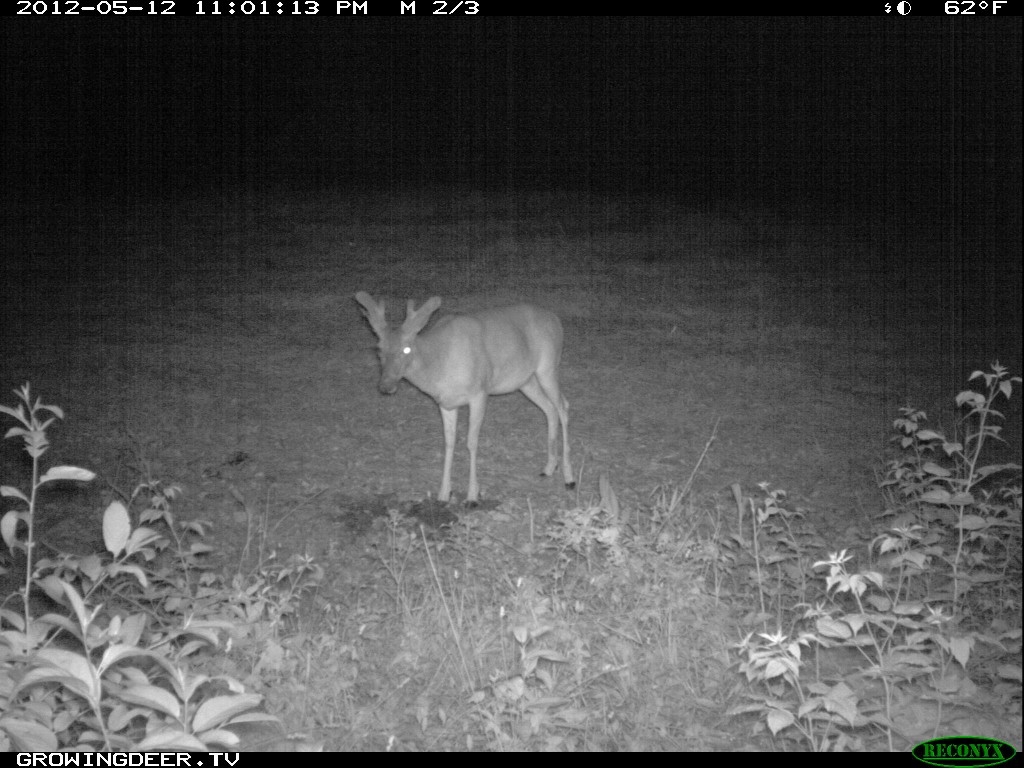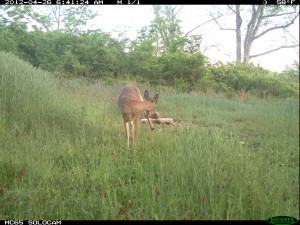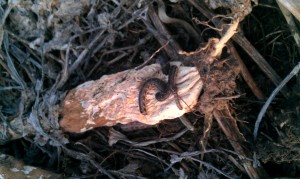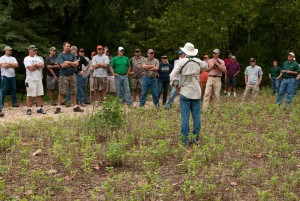Category: Hunting Blog
Antler Size and Food Plots
It’s certain that the quality of forage bucks consume is a huge factor in the size of antlers they produce. If your goal is to manage deer to produce better antlers, you must improve the quality of their diet. Establishing and maintaining food plots is probably the most practiced method of improving the quality of forage available to a local deer herd.
The phrase “food plots” is a very generic term. It’s used to describe everything from very small hidey hole plots best used to attract deer into shooting range to large ag fields that are capable of providing most of the quality forage necessary for all the deer in that area.
Unfortunately the lack of a precise definition has created some unsatisfied hunters. Some folks plant a hidey hole sized food plot and are upset when they don’t see an increase in average antler size.
Deer will consume several pounds of forage daily. At one end of the spectrum, it’s easy for a few deer to consume all the forage in a small plot before it provides any measurable advantage toward the herd’s health. The other end of the spectrum is the large production soybean fields in the Midwest. There are so many acres of soybeans in many areas that deer densities of even 100+ deer per square mile still have plenty to eat. This is a primary reason that deer in these areas produce larger antlers and more fawns than in areas where the landscape is primarily covered with trees.
Research has shown that in areas with relatively poor habitat (all trees, no crops, limited early succession habitat), just 1-2% of land in high quality food plots can make noticeable increases in average antler size!
However, to have this type of success, it requires more than simply scratching the dirt in an acre or two for each 100 acres. To increase the average antler size the deer must consume the forage, the forage must be available throughout the early and mid growing season and year round is better. The forage must transfer nutrients to deer.
This means the forage must be high quality (Eagle Seed forage soybeans have tested among the highest in digestible protein of all forage crops by multiple universities), and produce enough tons of forage to feed the herd.
Food plots can be a great hunting and herd quality tool. However, like most things in life, you rarely get more out of them than you put into them. There is no magic recipe. Food plots designed to improve herd quality require time and effort to establish. They also require ample soil moisture – which is currently missing from much of the whitetail’s range. I hope there is adequate soil moisture where you plant food plots!
Growing Deer together,
Grant
Antlers and Trace Minerals
By mid June most bucks’ antlers are developed enough to get an estimate of their configuration and potential size for the season. I always have my Reconyx cameras pointed at Trophy Rocks this time of year. Some recent posts on my Facebook page indicates that there is some confusion of why I strongly prefer Trophy Rock as a source of trace minerals compared to cattle blocks, homebrews, etc.
So, for the record, Trophy Rock is all natural. It’s mined in Utah and shipped – there are no artificial additives, etc. It’s mined from an ancient sea bed that was capped over (probably by volcanic action). This allowed the sea minerals to remain and harden throughout the deposit (not settle out and leave pure salt).
There are more than 60 different trace minerals in Trophy Rock. The amount of any of them, except salt, is low. That’s appropriate for trace minerals. Deer only need a very small amount of trace minerals daily. Let’s define “trace.” Most researchers refer to trace minerals in parts per million (ppm) of the diet. For a point of reference, one (1) ppm is about one inch in 17 miles!
It doesn’t take much of a trace mineral to benefit a deer. But without access to trace minerals in their diet, bucks won’t be able to express their full antler growth and does won’t express their fawn producing potential.
Researchers don’t know all the trace minerals or the quantity of each that deer require. It’s likely some of the trace minerals deer require to express their potential are available in the soil and/or plant. The availability of trace mineral varies significantly from area to area and even field to field in some cases!
This is why the vast majority of cattle mineral blocks only include six minerals and most products made for deer include a maximum of 20 trace minerals. If there are appropriately fertilized crops or food plots in the area, deer most likely have access to all the macro (“needed in larger quantities” minerals like calcium and phosphorous) minerals. However, no matter how much of the macro minerals are available deer will produce smaller antlers and fewer fawns if they don’t receive the necessary trace minerals.
There is a horrible drought occurring in most of the Midwest as I write this. However, I was thrilled at the antler growth patterns and fawn production shown by my Reconyx cameras this week. I feel strongly that having Trophy Rocks out at my place has helped the herd.
I notice deer tend to use Trophy Rocks more during periods of drought. This is probably due to the fact that they are consuming a lower quality of forage (not getting as many minerals from the plants compared to during a normal growing season) and consuming more free water (standing water compared to getting water from plants).
Certainly all deer, from mature bucks to young fawns, are currently using Trophy Rocks at my property. Fellow hunters and landowners that I’ve shared trail camera pictures with have all agreed that the bucks at my place are showing bigger antlers per age class compared to where they hunt.
Growing Deer together,
Grant
Scouting Whitetails With N.O.A.A.
It’s been very dry throughout much of the whitetail’s range so far during antler growing season. For example it was the second driest May since records have been kept in Arkansas, fourth in Kansas, seventh in Missouri, and eleventh in Oklahoma. N.O.A.A has been keeping records 118 years. It has been very dry during the growing season in these states.
These rankings are based on statewide averages. I think it is drier at my place (just a few miles from Arkansas) than the Missouri average indicates. Likewise, I’m sure some areas in these states have received an isolated thunderstorm or two and aren’t as dry as indicated by these statewide averages.
Plants need water to transport nutrients from the soil and air into and throughout the plant. Without adequate moisture, plants are simply not as nutritious compared to more normal growing conditions. Remember plants are simply transfer agents and if plants are lacking nutrients, so are the critters that consume them. Deer in drought areas won’t produce as large of antlers or as many (or healthy) fawns compared to the same deer during better growing conditions (different years).
Therefore droughts have a huge impact on hunters deciding on where (which state or region) to go hunting and deer herd managers deciding on whether to harvest bucks during drought years. I use maps to plan where to hunt and data from N.O.A.A can be a very valuable scouting tool!
Is the primary goal of planning an out of state hunt is to chase deer with larger antlers than what’s typically produced near your home? Then studying the N.O.A.A. data and determining the severity and duration of droughts can be just as important as studying the average antler size from specific counties, etc.
For example, planning a deer hunt in Kansas might not yield the expected results if that area is experiencing one of the worst growing season droughts during the past 100+ years. This is always dependent on the local conditions. For example, if you were planning to hunt near an irrigated soybean or alfalfa field, the drought might make the hunting better! The local herd had access to quality forage and all the deer in the neighborhood will likely be feeding at the irrigated crop versus spread out in the drought stricken native vegetation.
For deer managers that manage and hunt the same deer from birth through maturity, droughts may cause a different decision. Consider if you and your guests have passed bucks waiting for them to express 90+% of their antler growth potential. These bucks reach 4.5 years of age during an extreme drought. Due to a lack of quality forage, those mature bucks only express a portion of their antler growth potential – maybe not as much as they did when they were 3.5 years of age. The manager then has to decide if he and his guests will attempt to harvest the bucks even though they are only expressing a portion of their antler growth potential. This is a personal choice – one that should be based on the reason you/the landowner hunts.
Personally, I enjoy the challenge of hunting mature bucks and does. Given the extreme drought conditions at my place this year, I will focus on harvesting enough does to balance the amount of food available during these poor conditions. They will likely return again. During years with better growing seasons, each deer will have ample food to produce the best antlers and fawns they can.
I will also attempt to harvest a mature buck. I enjoy large antlers as much as most hunters. However, my primary satisfaction is being able to pattern and harvest a mature buck. My guests and I will only harvest a small portion of the mature bucks that our years of management efforts have yielded. I realize now that bucks will not express their full antler potential this fall. However, they will still be just as alert and skilled at avoiding predators (2 and 4 legged). The hunt will still score as much to me as if I was hunting during a year with average or better growing conditions.
I hope the growing conditions are good where you hunt. If not, I hope you still enjoy the hunt!
Growing Deer (during all conditions) together,
Grant
Dry Weather Whitetail Habitat Management Plans
It’s June 8th and as I look out the office window across The Proving Grounds it looks like mid-July….DRY! Almost all signs of our last rainfall are gone. The plants are definitely showing it. If this trend keeps up it could be a very stressful summer for our food plots and wildlife. I’ve already been hearing about wildfires across most of the Midwest due to the lack of measurable rain.
With all these negative thoughts for our wildlife there is one positive that comes to mind. The dryer weather could make for some great fall or late growing season prescribed fires. These fires can also be a great tool to help stimulate forbs and other vegetation that are great for wildlife. Plus, it can ultimately help remove some of those annoying ticks (check out GDTV 124), NOW THAT IS GOOD NEWS!
It is very important to be prepared for a prescribed fire by developing a burn plan and getting the fire lines in place. Here at The Proving Grounds we will be cranking up the back pack blowers and chainsaws soon to make our fire lines. Ideally our fire lines are 4 to 5 yards wide with all leaves, sticks, and any other material that’s easily flammable removed to bare soil – or rocks in our case. This line or break completely surrounds the fire area to prevent the fire from getting into an area you didn’t plan on burning — which could lead to your having a dangerous problem on your hands.
If you plan on doing a fall or late season prescribed fire on your proving grounds it is time to start preparing.
Adam
Warning: This blog contains information about prescribed fire which is a management tool for trained professionals using the appropriate tools for the situation.
Hunting Season Now?
It’s June 1st and prime fishing time for many outdoorsmen. Others are busy planting and maintaining food plots and other habitat management activities. However, it’s wide open hunting season for some.
Throughout most of the whitetail’s range fawns have just been born or will be born shortly. Fawns are very vulnerable this time of year during the peak of predation. The research is clear that coyotes and other predators can take a huge toll on fawns and cause substantial stress to adult deer.
Rather than sit by and wish it wasn’t so, why not go predator hunting! This is a great time of year to remove or spook predators from the area where you hunt deer and turkey! The mornings are fairly cool this time of year and many predators are active during the first few hours of daylight.
Predator hunting is a great way to refine your hunting skills! I typically use my deer hunting gear (camo, Nikon scope, Winchester Ballistic Silvertip ammo, etc.). Besides having a good chance of seeing some bachelor groups of bucks, removing predators from your hunting spots may allow the resident bucks to be a bit calmer this fall. When deer are constantly harassed by four-legged predators, they are probably much more alert to two-legged predators as well!
Watching, smelling, or hearing where a coyote killed a prey species is likely very alarming to mature bucks. I see coyote calling this time of year as a win win. This action removes stress from the local deer herd and keeps me and my gear tuned up for deer season!
Do you and your deer herd a favor and grab a FoxPro caller and spend some time being a predator of predators! It’s a win win hunt!
Growing Deer together,
Grant
Big Bucks for Big Bucks
I’m returning from the Kentucky Proving Grounds as I write this. The Kentucky Proving Grounds is a tract of land owned by my friend, Mr. Hamby. His mission is to produce and hunt quality white-tailed deer and turkey and share those experiences with family and friends.
This week we started another project toward meeting Mr. Hamby’s mission. There are about 140 acres of loblolly pines in seven different stands that were planted 18 years ago at The Kentucky Proving Grounds. If pine trees are planted at a normal density (about 750 trees per acre), they will become so crowded that each tree will grow slower, be weakened and susceptible to disease and or insects.
Most critters or plants that are crowded don’t prosper for the same reasons. For example, deer herds that are overcrowded don’t express their full potential and are more susceptible to disease and/or insects.
When deer herds are overcrowded and damaging their habitat the best solution is to harvest excess reproductive units (does). The goal is to harvest some of the population to allow the rest to be healthier and not damage the habitat.
It’s the same with pine trees. By harvesting the excess trees, the remaining trees will grow faster and be less susceptible to most disease and insect threats. However a big difference is that the landowner can generate revenue by thinning trees! So when appropriate, thinning trees is a great way to improve the habitat, maybe clear food plot location, and make some revenue.
At The Kentucky Proving Grounds, Mr. Hamby has had me designate the flat and accessible locations to be clearcut (remove all trees) and establish new food plots. In the other portions of the pine stands, I instructed the loggers to remove the trees with less than desirable form, smaller diameter, etc., and insure that each residual tree has space around it’s crown so it can receive ample sunlight, moisture, and nutrients from the soil.
Good timber management is usually good deer management.
Growing Deer together,
Grant
Patterning Mature Bucks
I enjoy researching and managing deer. I’ve spent my career learning about deer – their behavior, how to improve their habitat, etc. However, my passion is driven by being a hunter – and learning how to pattern mature bucks. Patterning bucks simply means learning their habits, personality, and range.
Two tools that I use to pattern mature bucks are Reconyx trail cameras and Trophy Rocks. Even though it’s more than four months until deer season opens in Missouri, I’ve started patterning a mature buck I call Split Brow.
This is a picture of Split Brow from last fall. He was one of the bigger bucks that I knew about at my place. My Reconyx camera captured lots of images of Split Brow, but almost all of them were at night. I didn’t hunt for Split Brow as I had no indication he was moving during the day with any regularity. To my knowledge, he maintained this nocturnal only pattern through the hunting season. That’s not to say Split Brow wasn’t occasionally active during the daylight. However, the vast majority of pictures of him were at night. Hunting in his core area would have likely alerted him and I would have had a very small chance of seeing him during daylight. So, I hunted a buck that tended to be active more during daylight hours.
During the late season Split Brow apparently was in a tough fight. He was blinded in his right eye and broke the G3 of the left side of his rack. Disney got it wrong — life is not fun and games in the wild.
Split Brow shed his antlers soon after he received these injuries. I was worried he wouldn’t survive due to a secondary infection or internal injuries. Knowing that Split Brow had just shed, Tracy and Crystal (her lab) went hunting for his antlers. Since we had a Reconyx image of him that morning at a Trophy Rock with both antlers and another that evening showing he had shed both antlers, I knew Tracy and Crystal would have a relatively small area to search. Within an hour they had found both of Split Brow’s sheds.
Bucks aggressively seek trace minerals during the spring and summer (when antlers and fawns are developing) time of year so it was easy to see if Split Brow was alive by putting a Trophy Rock and Reconyx in his core area. It will be very interesting to watch his antlers develop this year and see if his antler configuration changes substantially.
Patterning bucks throughout the year helps me as hunter! It also teaches me much about how bucks use the existing habitat and what I need to do to improve it from a manager’s and hunter’s point of view. Stay tuned and I’ll keep you posted on how Split Brow develops this year and if his pattern changes to include more activity during the daytime. If it does, he’ll be at the top of my hit list.
In the mean time, grab some Trophy Rocks and dust off those trail cameras. It’s time to start patterning bucks where you hunt!
Growing (and patterning) Deer together,
Grant
Ticks: On You and Your Deer
Summer 2012 may well be recorded as the summer of ticks! I use my Reconyx cameras year round to monitor and study deer at my place and on client properties. At my place near Branson, Missouri and a client’s property near Cadiz, Kentucky I’ve never noticed as many ticks on deer at this time of year during my 20+ year career of using trail cameras. The tick loads I’m seeing now are typically not seen until late summer.
The CDC (Centers for Disease Control) says, “Lyme disease is the most commonly reported vectorborne illness in the U.S. In 2009, it was the 5th most common Nationally Notifiable disease.”
Both Rocky Mountain Spotted Fever and Lyme’s are serious diseases. Those of us that are frequently in the outdoors need to be diligent about searching for and removing ticks after being in the field. The CDC Lyme Disease page has some useful information about how to prevent being bitten by ticks, how to remove ticks, and diagnosis of potential tick-borne diseases.
My family, staff, and, I are exposed to ticks almost daily. We’ve found that treating our clothes with Permanome and allowing it to dry on the clothes a few days before wearing works well. One treatment will last through the clothes being laundered several times. This spring while turkey hunting, Adam had treated his clothes and his brother didn’t. Adam said he literally watched ticks crawling on his brother and there were none on him. His brother hadn’t treated his clothes. Permanome is good stuff when used appropriately.
However, deer can only attempt to groom themselves and other deer to remove ticks. This is not effective based on my Reconyx images. In an effort to reduce the chances of my family and guests suffering from a tick-borne disease, and to improve the fawn survival and overall health of the deer herd at my place, I’m researching the cost and effectiveness of different tick control methods. If you follow GrowingDeer.tv at all, you know I use prescribed fire frequently. That’s clearly not controlling the tick population at my place. If you would like to reduce the number of ticks where you hunt, stay tuned.
Of all the predator control work I do, none may be more important than attempting to reduce the number of ticks to benefit the deer, turkey, and other game species using my place. From the comments on my Facebook page, ticks are a noticeable problem throughout much of the whitetails range this year. In many areas I’m sure there are more pounds of ticks per acre than there are predators – literally. I’ll keep you posted as to what I learn.
Growing Deer together,
Grant
Food Plot Pest: Armyworms
A few days ago I received an email with some troubling content from a good friend and fellow deer manager, Doug Galloway. The piece of dirt Doug plays with is about three hours southwest of The Proving Grounds (my place). Doug reported that one of his food plots was totally destroyed by armyworms. He also reported that the armyworms had removed all the leaves from some oak trees on his property.
This morning, the local extension office reported that armyworms have been identified in several counties in southwest Missouri, including the county where The Proving Grounds is located.
If you are not familiar with armyworms, there is a great summary at Integrated Pest Management. Armyworms are named such because they can literally move across the landscape like an army, eating most forage in their path. They can be so numerous that they will literally stack up several inches deep against a building in their path.
The good news is that infestations are not always at a level that causes massive damage. When they are, there are several insecticides that can be used to control armyworms. Warrior RUP is an insecticide that is commonly recommended to control armyworms. As always, read and follow the product label. Timing of the application is critical as applying too early will not kill the coming worms and waiting too late will result in significant damage to the crop and the worms moving on before the insecticide is sprayed.
For some of you that have food plots in the southern states, the damage from this round of armyworms has already occurred. Some of you in the northern states haven’t even thought about planting yet. However, for those in the Midwest, it will be critical to monitor our plots, check with local extension agents and farmers, etc., to monitor armyworm activity near and at our properties.
Being a deer manager is not simply passing up immature bucks. During the next few weeks, it may mean fighting a literal army of worms for some of us. It’s better to fight than to let an existing food plot be consumed by this pest. The link I described above has some good tips about scouting for armyworms.
Growing Deer together,
Grant
How to Plant Successful Food Plots
I get a lot of requests to publish a calendar that tells when and what to do to have great food plots! I’ve had offers from seed companies, magazines, etc. I could have sold and resold such a calendar. Heck, I probably could have paid for several great whitetail hunts from publishing such a calendar.
The problem is that such calendars seldom are accurate. Planting by such guides seems to result in as many failures as good crops. This is not the authors’ fault. The data for these guides are based on historic weather patterns and averages of climate data. That’s like saying the average man is 5’10” tall. Some men are 5’10” but many more are either shorter or taller than 5’10”.
The same is true for the last frost dates during late winter, the first frost date during the fall, rainfall amounts, etc. Averages rarely predict the best conditions to plant on any given year.
Rather than offer a planting calendar, I will share the guides I use to create successful food plots!
- Take a soil sample from each plot to be planted – at least once a year. I typically collect soil samples during the late winter and when the soil is dry.
- One sample a year will be fine. Don’t skip years! Soil tests are the least expensive part of growing forage that deer wish to consume more than other food items.
- Add lime and fertilizer based on the soil tests results a week or so before planting.
- Clover and alfalfa can be planted when the soil temperature is 40 degrees and up to 60 degrees. The exact planting date within that range should be based on forecast, soil moisture, etc. A hard frost will damage or kill most young forage crops, including clover and alfalfa.
- The temperature today is only half the story. I study the weather forecast and attempt to insure there isn’t more cold weather coming.
- By the way, I’m not a fan of alfalfa for food plots!!! Deer eat it – but it is tough to manage – I leave alfalfa to the professional farmers – not the food plot farmer with limited ability and time to spray harsh insecticides, etc.
- Corn should be planted when the soil temperatures are 50 degrees and rising – not just a spike of 50 degrees.
- Soybeans and almost all other crops should be planted when the soil temperature (2″ deep at 9 AM) is 60 degrees and rising. The timing of this will vary almost every year!!
- Soils warm up later (as much as a few weeks later) in no-till plots compared to areas where the soils have been plowed, disked, etc. This is because the remaining vegetation shades the soil and keeps it cooler – a significant advantage later during the summer. By the way, this is just one of MANY advantages to no-till systems.
Fall planting (soil temperatures are almost never an issue for planting fall crops.)
- I like to plant all forage varieties at least 45 – 60 days before the average first frost date. I like to error on the 60 day side. However, this also varies based primarily on soil moisture availability. I don’t plant into dry conditions with no rain in the forecast – even if it means waiting until 15 days before the average first frost date.
- Remember that plants are only nutrient transfer agents. If there are limited nutrients in the soil, they will only transfer limited nutrients to the consumer (deer and other critters).
- Soybeans are the best single crop for deer and turkey that I’ve found yet. They are relatively drought hardy, easy to grow and deer love them! The only negative to soybeans is that deer do love them so much that beans can be damaged by being over-browsed, especially in small plots. I use an electric fence to keep deer out of these small plots until the beans have matured enough to withstand the browse or hunting season opens.
So, what’s the bottom line? It is this: professional farmers don’t gamble their income (crop production) on a set planting schedule and neither should you. Do your food plot activities based on conditions and not a date on a calendar or a bag map.
Growing Deer (and food plots) together.
Grant



